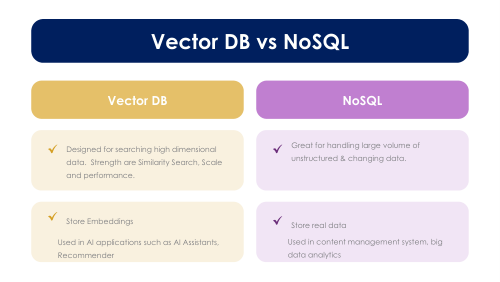Choosing the Right Database: Vector vs. NoSQL

VECTOR DB FEATURES |

WHAT ARE VECTORS |
|
|||||||||
|
|||||||||
2-how-vector-databases-work-i Challenges-frequent-update Criteria-to-select-vector-db Crud Operations For Vector DB Tutorials Uses-of-vector-db Vector-db-anti-patterns Vector-db-applications Vector-db-crud Vector-db-dimensions